Przy degustowaniu wina bardzo ważna jest wiedza o produkcji wina, odmianach, stylach wina oraz intuicja i wyobraźnia, a także nasze zmysły.
Istota ludzka posiada pięć zmysłów oraz nieco bardziej duchowy i kontrowersyjny szósty, którym jest intuicja. Których używamy do degustacji wina? Wszystkich. Zapraszam zatem do odczuwania wina całym sobą.
Co to znaczy, że wino jest dobre lub złe?
To pytanie niemal filozoficzne. Musimy lubić dane wino i to jest subiektywne, ale istnieją również pewne obiektywne czynniki, które musimy rozpoznać. Stylów i odmian wina jest tyle, ilu potencjalnych konsumentów. Z pewnością każdy może określić własne preferencje, niezależnie od ceny wina czy jego pochodzenia. Najważniejsze, że wino nam się podoba. To takie proste.
Jednak mówiąc bardziej ogólnie, w każdej kategorii czy stylu, dobre wino musi być poprawne, dobrze zrobione, przyjemne, bez żadnych wad. Odmiana ma się wyrażać w sposób szczery i bezpośredni, ma być także odzwierciedleniem miejsca i czasu, siedliska zwanego w terminologii winiarskiej mianem terroir, a także rocznika – bowiem nie ma dwóch identycznych roczników, nawet minimalne różnice w klimacie przekładają się na efekt końcowy w butelce.
Jedni wolą wina cięższe, inni lżejsze, jedni słodsze, inni zaś o pionowej i zaakcentowanej kwasowości. Aby rozpocząć definiowanie pojęcia dobrego wina, musimy upewnić się, że nie ma ono wad, takich jak nadmierna cierpkość, utlenienie lub dziwne smaki, które nie odpowiadają odmianie. Nie ma innego sposobu na sprawdzenie czy wino jest dobre, czy też nie, niż jego degustacja. Dopiero śledząc każdy etap degustacji, możemy wyczuć jego cechy lub wady.
Zmysł wzroku
Lubię bawić się winami, szczególnie tymi moimi ukochanymi. Mając w ręku lampkę ulubionego wina często staram się odtworzyć jego barwę na papierze farbami akwarelowymi. To zadanie jest bardzo relaksujące i pozwala poczuć się bardziej związanym z wizualną stroną wina. Z racji mojej pracy mam to szczęście, że odwiedzam setki winnic rocznie. W Polsce oraz krajach sąsiednich podczas krótkiego wypadu można odwiedzić winnicę i doświadczyć winnego krzewu w rzeczywistości. Zobaczenie winnicy na własne oczy to coś magicznego i niezapomnianego. Pozwala zrozumieć, dlaczego wino jest tak precyzyjne i piękne. Odwiedź winnicę, przyjrzyj się gronom i liściom, napełnij oczy ich niesamowitymi barwami.
Wzrok i obserwacja to także pierwszy etap degustacji wina. Widzimy kolor wina, jego jasność i przezroczystość. Kolor młodego wina możemy porównać z kolorem starego rocznika, który nabiera innych tonów. Oglądanie wina oznacza także docenienie piękna jego różnych niuansów.
Prawidłowe wino powinno być błyszczące i przejrzyste. Połysk określa stan wina, jego świeżość i to, czy wygląda odpowiednio do swojego wieku. Na przykład, jeśli znajdziesz czerwone wino młode, z niedawnych zbiorów z nadmiernymi brązowymi odcieniami, oznacza to, że coś jest nie tak i butelka na pewno cierpiała na problemy z utlenianiem.
Pamiętaj, że kolor daje nam kilka sygnałów. Wino o lekkiej budowie będzie miało lekki odcień. Wino bardziej skoncentrowane będzie miało intensywniejszą barwę. Oczywiście każda odmiana ma swój własny kolor, ale spójrzmy na lepkość wina, która zależy od zawartości cukru i alkoholu. Wino blade, kiepskie może budzić pewne podejrzenia co do jego jakości. Kieliszek wina powinien zaalarmować, gdy wino jest:
- nieprzejrzyste
- matowe
- w przypadku wina białego kolor jest „siny”
- w przypadku wina czerwonego jest ono zbyt brązowe, z wyjątkiem win czerwonych z bardzo starych roczników
Zmysł słuchu
Tak, wino można usłyszeć! Kiedy odkorkowujemy butelkę ten charakterystyczny dźwięk korka, kiedy dekantujemy wino lub kiedy nalewamy wino do kieliszka. Spróbuj podać trzy kieliszki o różnej ilości nalanego wina, a gdy uderzysz je metalowym przedmiotem, zapewniam, że zabrzmią zupełnie inaczej. Za pomocą wina naprawdę można tworzyć muzykę. Przede wszystkim usłyszeć winorośl, a zwłaszcza magiczny szelest liści na wietrze. Polecam wybrać się na jeden dzień do winnicy i skosztować wina siedzącego wśród winorośli, łącząc się z naturą. To transcendentalne doznanie.
Zmysł węchu
Nosem wyczuwamy zapach wina. To jeden z moich ulubionych etapów degustacji. Zmysł ten pozwala nam rozróżniać aromaty. Zawsze zapraszam do kolekcjonowania aromatów, zarówno w butelkach, jak i w pamięci. Profesjonalni winiarze i degustatorzy ćwiczą etap węchowy, aby móc rozpoznać jak najwięcej aromatów. Każdy z nas ma coś, co nazywa się biblioteką aromatów lub pamięcią aromatów, nawet nie widząc niczego, jesteśmy w stanie rozpoznać nosem, u którego sąsiada piecze się ciasto z jabłkami, a który robi dziś grilla. Aby poszerzyć tę bibliotekę aromatów, musimy wąchać rzeczy. Kiedy gotujemy, robimy zakupy w sklepie spożywczym. Tylko praktykując możemy wymusić to trio: nos – usta – mózg rozpoznający wiele aromatów.
Za każdym razem, gdy mówimy o różnych odmianach, opisujemy unikalny profil aromatyczny. Możemy stworzyć własny zestaw do ćwiczenia pamięci olfaktorycznej. W słoiczkach zamknąć płatki kwiatów, olejki eteryczne, zioła i przyprawy, skórki owoców i materiały organiczne, takie jak liście, ziemię, skóra itp. Pomyśl na przykład o czerwonych i czarnych owocach, od truskawek, wiśni po figi i zobacz, jak te aromaty wyrażają się w winach.
Aby dbać o nos, ważne jest, aby był on czysty i zdrowy, ponieważ pomaga nam to dobrze oddychać, a co za tym idzie, lepiej postrzegać zapachy. Dlatego nie palę, perfum używam w ilości minimalnej, unikam przeciągów i klimatyzacji i zawsze mam ze sobą spray z wodą morską, aby nawilżać śluzówkę nosa.
Mamy różne rodziny aromatów charakterystyczne dla poszczególnych odmian i stylów wina.
Degustując wino, należy zwrócić uwagę na następujące aspekty:
- intensywność nosa
- szczerość aromatów
- jakość bukietu – aromaty, które powinny wzbudzić podejrzenia i mogą wskazywać na wadę wina to:
Aromat korka: ten wyjątkowy zapach przypomina aromat prażonych orzechów laskowych i jest wytwarzany przez prekursory występujące w dębie korkowym.
Aromaty kwasu, octu, zardzewiałych jabłek, zapachy sfermentowane.
Aromaty drożdżowe lub maślane.
Zapach acetonu, lakieru do paznokci, rozpuszczalników chemicznych, w których występuje etylen.
Błędy produkcyjne o wysokiej zawartości siarki, które rozpoznasz po zapachu zgniłych jaj, kleju lub obornika.
Czytając notatkę degustacyjną lub etykietę wina, odnajdujemy na kontretykiecie kilka nazw aromatów. Co one oznaczają? Skąd pochodzą? Z pewnością nie raz zwróciliście uwagę, że w opisach win jest, że wino ma aromaty czerwonych owoców lub czekolady. Zapewniam, że w winnicach nikt nie dodaje kawałków czekolady czy soku owocowego, aby uzyskać najbardziej złożony bukiet. Każde wino ma swój bukiet zbudowany z kilku molekuł.
Cząsteczki aromatu mają swoją charakterystykę i skład chemiczny. I na przykład cząsteczka o składzie „aromat róży” jest obecna w kwiecie róży i może znajdować się w winie. Wszystkie aromaty w winie pochodzą z trzech źródeł, ze szczepu, z którego wino jest produkowane. Po drugie, pochodzą z terroir – różne rodzaje gleby mogą na przykład przenosić do wina różne aromaty, np. gleba bogata w wapń nadaje mu nutę mineralną, natomiast gleba z dużą ilością żelaza nadaje mu aromat krwi lub surowego mięsa. I wreszcie trzecim źródłem aromatów jest sama produkcja wina, z nutami fermentacji i starzenia w beczkach.
W trakcie edukacji aromatycznej warto nauczyć się dzielić je na rodziny aromatów. W tej samej rodzinie są różne aromaty, ale zawsze bardzo podobne. Jak mówią znawcy wina, można rozpoznać 500 różnych aromatów, niektórzy uważają, że być może jest to 700. Zapewniam, że jeśli rozpoznacie w winie po jednym lub dwóch z każdej rodziny, możecie być z siebie dumni i kontynuować tę edukację gra zmysłów. Mamy zatem aromaty kwiatowe, ziołowe, ziemiste, eteryczne, owocowe itp.
Zmysł smaku
Język jest głównym narządem zmysłu smaku, gdzie zlokalizowane są kubki smakowe odpowiedzialne za smaki: słodki, kwaśny, słony, gorzki i umami. Być może jest to najważniejszy ze zmysłów. Połączenie tych pięciu smaków pozwala nam dostrzec nieskończoną liczbę nowych kombinacji.
Aby o niego zadbać, należy dbać o higienę jamy ustnej. W starożytnej indyjskiej medycynie Ajurwedzie jednym z etapów porannej rutyny jest skrobanie języka. Zabieg ten eliminuje toksyny, bakterie i martwe komórki z języka, aby zapobiec nieświeżemu oddechowi. Wspomaga zdrowie jamy ustnej i układu trawiennego, a przede wszystkim poprawia zmysł smaku, tak ważny dla wszystkich miłośników wina.
Nasze kubki smakowe nie kłamią. Jeśli dodamy do tej analizy naszą wiedzę, będziemy w stanie w pełni zrozumieć wino. Na poziomie smakowym musimy wyczuć smaki wina: kwasowość, słodycz, aromaty szczepu, konsystencję (jakość i ilość tanin), cielistość (stężenie wszystkich wymienionych pierwiastków) oraz trwałość w ustach. Na tym etapie najłatwiej jest odróżnić wino kultowe od dobrego. Dobre wino poprawia nam humor. Jest miło i przytulnie. Podobało nam się! W przypadku ikony wszystko to sięga głębiej. To wino, które często zmusza do myślenia, medytacji, a czasem nawet płaczu i marzeń. Budzi nasze emocje, ponieważ jest subtelniejsza i bardziej transcendentalna.
Zmysł dotyku
Skóra jest naszym największym organem. Wszyscy mamy wrażliwość dotykową, która pozwala nam postrzegać, czuć, dotykać i poznawać teksturę (gładką lub szorstką), twardość (miękką lub twardą) i temperaturę (zimną lub gorącą) rzeczy.
Skóra to cienka warstwa, która pokrywa i chroni nasze ciało. Jak dotknąć wina? Dosłownie zwilż palce lub dłoń winem. W ten sposób możemy docenić, jak linie brodawkowe są zaznaczone garbnikami. Możemy także zostawić ślad wina w notatniku. Nie ma żadnych limitów. Wyobraźnia jest granicą. Są artyści, którzy moczą pędzle różnymi czerwonymi winami i tworzą piękne obrazy w czerwonawych odcieniach.
Jeśli możesz odwiedzić winnicę w miesiącach jesiennych, kiedy winogrona są dojrzałe, rozgnieć jagody palcami, zobacz ich odcienie, dotknij miąższu, poczuj ich soczystość.
Zmysł intuicji
Tak, to prawda, smak sprawia, że wybieramy jedne wina, a nie inne, ale postrzeganie wina to także coś instynktownego, czego nie da się opisać słowami. Ten duchowy aspekt wina, dla niektórych boski, czyni wino tak szczególnym, nieuchwytnym, nieskończonym. Chcą wiedzieć, jakie pojęcie definiuje i odróżnia dobre wino od tego najwyższej jakości. To słowo to RÓWNOWAGA. W winie, zwłaszcza w jego smaku, musimy znaleźć idealną równowagę wszystkich jego elementów: pomiędzy kwasowością i słodyczą owoców, koncentracją tanin i miękkością w ustach, a także proporcją alkoholu i świeżości. Kiedy panuje wysublimowana harmonia, niczym symfonia, w której nie brakuje ani jednej nuty, nie mamy do czynienia tylko z winem dobrym, ale i światowej klasy.
Pomysły na degustacje tematyczne
Nie muszę nikogo przekonywać, że degustacja wina w domu to świetna zabawa i nauka jednocześnie. Dlatego zapraszam do przeprowadzenia różnorodnych degustacji tematycznych i pogłębienia wiedzy o winach.
Krótko mówiąc, degustacja tematyczna to nic innego jak wybór szczepu, stylu, marki lub rocznika wina i zastawienie formatu od 3 do 6 win, aby zobaczyć ich podobieństwa i/lub różnice. Wiedza teoretyczna jest bardzo dobra. Możemy przeczytać artykuły na temat odmian, nazw i stylów. Bawimy się także połączeniem wina i jedzenia. Jednak bez degustacji różnych win nie da się pogłębić naszej wiedzy.
Pomysły:
- Wybierz tę samą odmianę, ale z różnych krajów
W przypadku tej horyzontalnej degustacji otwórz wyżej wymienione wina z bieżących i poprzednich zbiorów i zobacz ewolucję wina. Obserwuj, jak winiarze interpretują różne pochodzenie i szczepy. To bardzo przydatne ćwiczenie. Zapisz swoje spostrzeżenia na temat smaku każdego wina i rodzaju potrawy, z którą chciałbyś je spróbować.
2. Wybierz dwa lub trzy wina z tej samej winnicy i z tego samego szczepu
3. Wybierz to samo wino, ale z różnych roczników
Jeśli masz kilka roczników tego samego wina, możesz zorganizować degustację wertykalną. Oznacza to, że będziesz degustował to samo wino, ale z różnych lat. Chociaż może być ich więcej, wybierz co najmniej trzy różne roczniki. Pamiętaj, aby wina miały odpowiednią temperaturę. Jeśli któryś z roczników jest bardzo stary, ma co najmniej pięć lat, zawsze zaleca się zdekantowanie go na godzinę przed degustacją, aby wino mogło pooddychać.
Ten format degustacji jest bardzo edukacyjny, ponieważ pozwala zobaczyć ewolucję wina i obserwować jego zmiany. Wielu ekspertów zaleca próbowanie win od najmłodszego do najstarszego. Są jednak winiarze, którzy wolą postępować odwrotnie. Starsze wino jest delikatniejsze, młodsze natomiast nadal posiada nuty owocowe i bardzo wyraziste taniny. To zależy od ciebie. Obydwa sposoby są poprawne. Ćwiczenie: Biorąc pod uwagę różne rodziny aromatów, przyjrzyj się ewolucji ich profilu na przestrzeni lat.
4. Wybierz tę samą odmianę z tego samego regionu, ale od różnych producentów
Każda z tych degustacji tematycznych może być w ciemno (etykietka zakryta) lub otwarta. To zależy od własnych preferencji. Pozwoli to naprawdę zrozumieć odmiany, pochodzenie i zbiory. Ponadto zapraszam nie tylko do degustacji win, ale także do dyskusji na ich temat przy wykorzystaniu wszelkich dostępnych informacji. Zapewniam, że każdy degustator będzie miał swoje zdanie i sprowokuje pyszną i emocjonującą dyskusję z kieliszkiem wina w dłoni naturalnie.
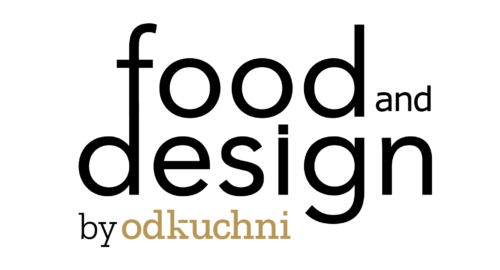
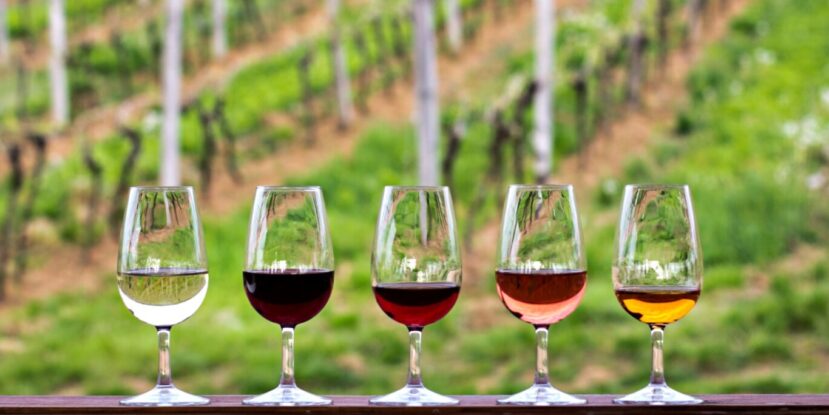
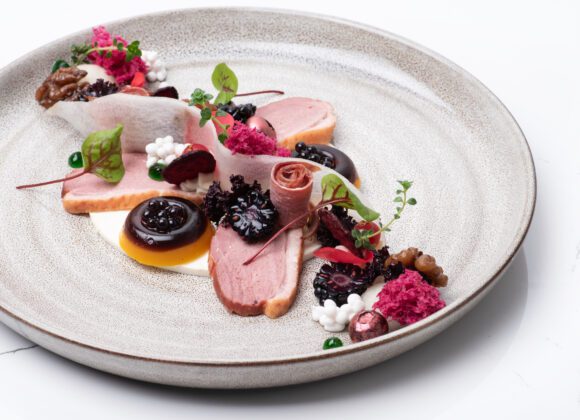
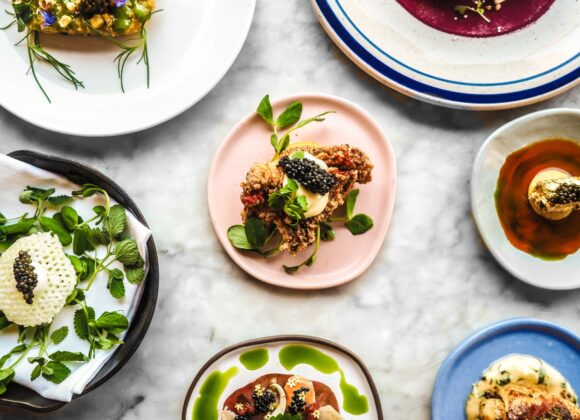
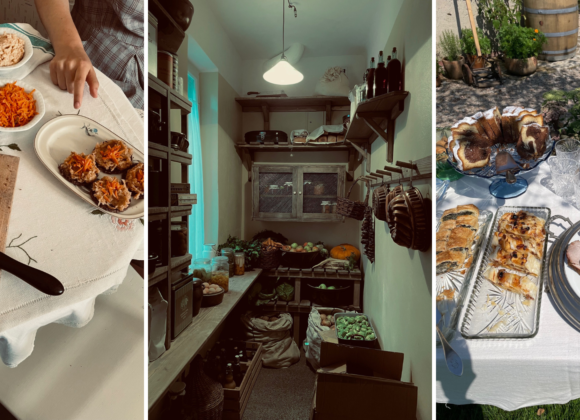

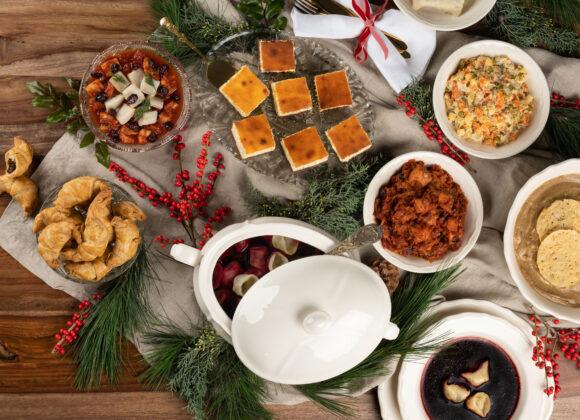



 Młodszy specjalista ds. komunikacji marketingowej i PR.
Młodszy specjalista ds. komunikacji marketingowej i PR.


 Absolwent Uniwersytetu Warszawskiego oraz Szkoły Głównej Gospodarstwa Wiejskiego. W branży HoReCa od ponad 10 lat. Przez lata związany z Grupą Trip, Sobienie Królewskie Golf and Country Club oraz restauracją Florentin w Warszawe.
Absolwent Uniwersytetu Warszawskiego oraz Szkoły Głównej Gospodarstwa Wiejskiego. W branży HoReCa od ponad 10 lat. Przez lata związany z Grupą Trip, Sobienie Królewskie Golf and Country Club oraz restauracją Florentin w Warszawe. Absolwentka Wydziału Architektury Politechniki Warszawskiej na kierunku Architecture for Society of Knowledge oraz Komunikacji Wizualnej na Politecnico di Milano. Specjalistka od budowania nastroju. Doświadczenie zdobywała w kraju i zagranicą podczas licznych warsztatów międzynarodowych (Sevilla, Lizbona, Florencja), stypendium na La Sapienza (Rzym) oraz pracując m.in. w Carmi e Ubertis i ADM Milano.
Absolwentka Wydziału Architektury Politechniki Warszawskiej na kierunku Architecture for Society of Knowledge oraz Komunikacji Wizualnej na Politecnico di Milano. Specjalistka od budowania nastroju. Doświadczenie zdobywała w kraju i zagranicą podczas licznych warsztatów międzynarodowych (Sevilla, Lizbona, Florencja), stypendium na La Sapienza (Rzym) oraz pracując m.in. w Carmi e Ubertis i ADM Milano.








 Menedżer z wieloletnim doświadczeniem w branżach kosmetycznej, spożywczej, dziecięcej. W trakcie swojej kariery związany z firmami takimi jak: L’Oreal, Samsung, Danone-Nutricia, Unilever. W ciągu swojego życia zawodowego odpowiadał między innymi za rozwój sprzedaży i contentu eCommerce w Polsce i krajach Europy Środkowo-Wschodniej.
Menedżer z wieloletnim doświadczeniem w branżach kosmetycznej, spożywczej, dziecięcej. W trakcie swojej kariery związany z firmami takimi jak: L’Oreal, Samsung, Danone-Nutricia, Unilever. W ciągu swojego życia zawodowego odpowiadał między innymi za rozwój sprzedaży i contentu eCommerce w Polsce i krajach Europy Środkowo-Wschodniej. 

























































